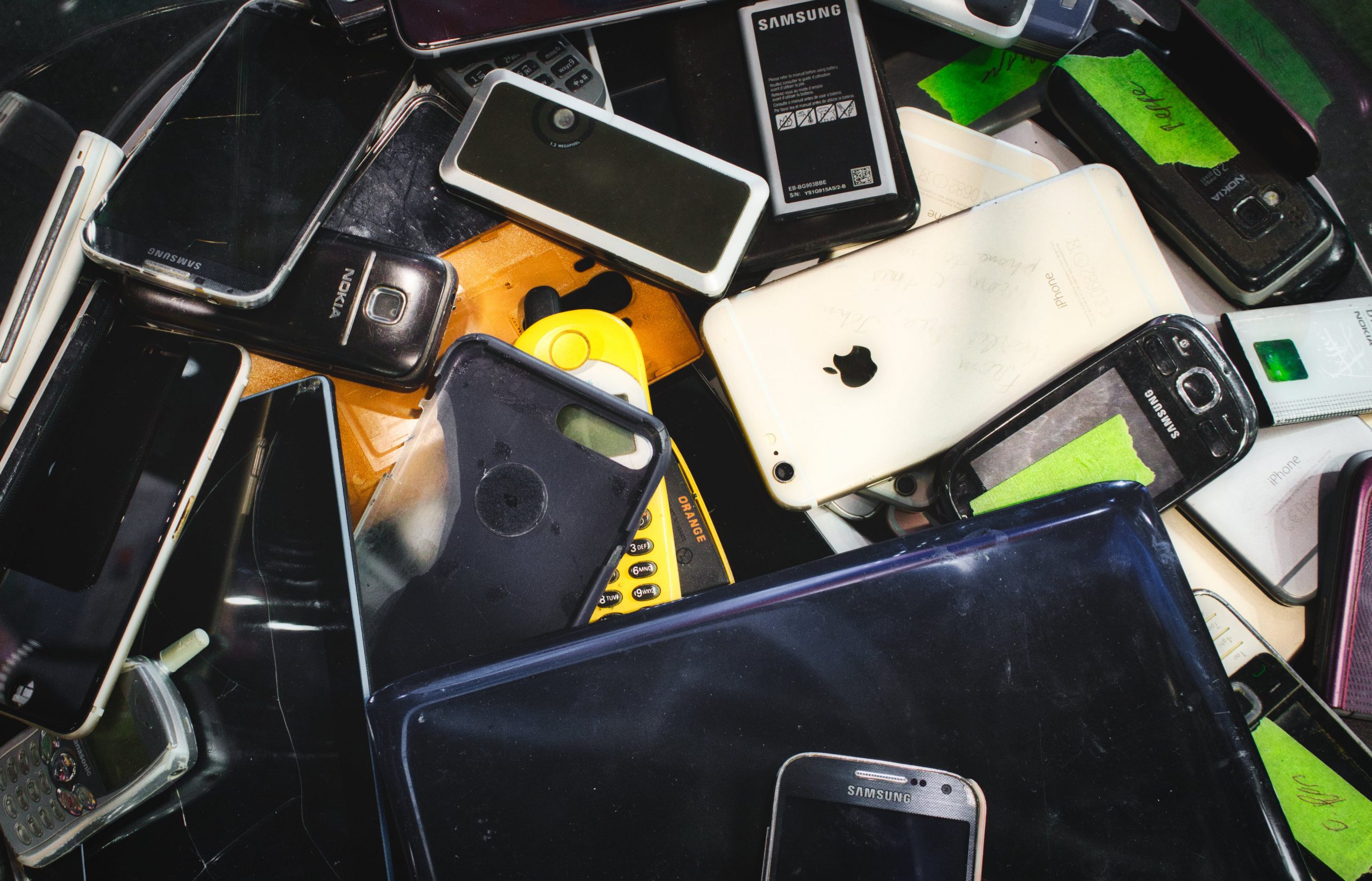Producing a new smartphone is extremely damaging to the environment.
Mining rare earth metals such as scandium, terbium and neodymium, which are used in components such as screens and speakers, causes huge amounts of pollution.
Not to mention, once raw materials are removed from the ground they must be refined, which involves nasty chemical treatments, as well as smelting, which produces massive amounts of carbon emissions.
Here at Green Smartphones, we decided to find out which smartphone manufacturers are the best when it comes to environmental outcomes, based on the sustainability of their manufacturing process, as well as their attitudes towards emissions and waste reduction.
Most and least sustainable smartphone manufacturers
| Rank | Company | Direct GHG emissions (change from previous year) | Carbon neutral? | Net zero target | Plastic packaging reduction | 100% renewable electricity? | Proportion of waste diverted from landfill | Recycling target | Proportion of recycled materials used | Devices recycled last year | Score |
|---|---|---|---|---|---|---|---|---|---|---|---|
| 1 | Apple | -9.96% | Yes | 2030 | 65% since 2015, goal to eliminate by 2025 | Yes | 70% | None for waste produced, aims to use 100% recycled materials, no date | "Nearly 20%" | 18m devices, including computers and iPads | 9 |
| 2 | +16.49% | Yes | Achieved through offsets | Goal to eliminate by 2025 | Yes | 77% | None | 100% recycled alumnium on Pixels, some recycled plastics | Unknown, does have a recycling program | 7 | |
| 3 | Sony | +3.94% | No, aiming for 2030 | 2040 | 15% since 2018 across all products | No, goal of 100% by 2030 | 98.5% | Achieved, 98.5% | Some recycled plastics | 70,000 tons, third parties | 5.5 |
| 4 | Samsung | +13.00% | No | 2050 | Goal to eliminate by 2025 | No | 95% | 100% by 2025 | Some recycled plastics | None | 4.5 |
| 5 | Vivo | -19.00% | No | None | Unknown | No | Unknown | None | None | 108516 devices | 3 |
| 6 | Huawei | +16.04% | No | All buildings by 2050, no global target | 89% on P50 phones compared to P40 | No | Unknown | None | None | 11826 tonnes | 2.5 |
| 7 | Oppo | -6.28% | No | None | 95% since 2020, in Europe | No | Unknown | None | None | 216 tons through trade-in program | 2.5 |
| 8 | Alcatel | -37.57% | No | None | Unknown, overall plastic usage increased by 14,800 tonnes | No | Unknown | None | None | None | 2 |
| 9 | Motorola | -10.50% | No | None | Unknown | 1% of all energy used is renewable | 42% | 50% in 2022 | None | None | 1.5 |
| 10 | Xiaomi | +8.27% | No | None | 60% since 2019 | No | Unknown | None | None | Unknown, does have a recycling program | 1 |
Methodology
To assess the relative environmental sustainability of the world’s biggest smartphone manufacturers, we compared their performance in the following areas:
- Direct greenhouse gas emission increase/decrease, past year: where reported, we looked at Scope 1 and Scope 2 emissions.
- Carbon neutrality: whether or not the company has a concrete carbon neutrality target, where they were not carbon neutral already.
- Net zero target: when the manufacturer aimed to achieve net zero emissions across its operations.
- Plastic packaging reduction: what steps if any the manufacturer took to reduce the use of plastics, especially single use, in its packaging.
- 100% renewable electricity: manufacturers received bonus points if their used renewable electricity in their direct operations, or had plans to do so in the near future.
- Proportion of waste recycled.
- Recycling target: we assessed how much waste a manufacturer aims to divert from landfill, and their timeline for doing so, where reported.
- Percentage of recycled materials: what proportion of a company’s smartphone manufacturing materials are recycled.
- Devices recycled: the number or weight of old smartphones recycled by a company directly or through a recycling scheme it runs.
For each metric, we gave the company either 0, 0.5, 1, 1.5, or 2 points. For example, Oppo has no net zero goal, so it received zero points in this area.
We then calculated the total points from each company in order to rank them.
Limitations
In performing this analysis, we did not include all smartphone manufacturers – instead, we chose to only analyse companies that sell at least one million handsets a year, on average.
There are sustainable smartphone manufacturers, like Fairphone, that perform much better than the manufacturers on this list. However, since they do not hold a large amount of market share at the moment, the environmental performance of these larger manufacturers is more important to assess.
About the author

Tom is the founder of Green Smartphones. You’ll find him writing about phones on the Green Smartphones blog, or talking about SIM deals and mobile networks on our YouTube channel. He’s the Android expert on the team – currently using a Google Pixel 9, recently upgrading from a very long-suffering Note 20 Ultra. When he’s not working on Green Smartphones, you’ll find him playing football or hiking.


